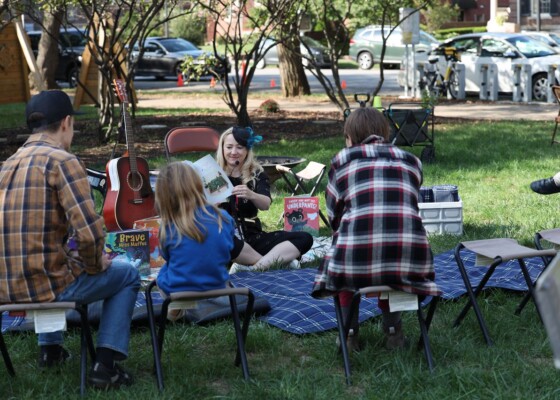Your Food Mileage May Differ
April 27, 2011Responding to a challenge from the Food for Thought exhibit team to name the food that traveled the farthest to get to Indiana, I decided to begin by finding the…
The farthest civilized point on the globe happens to be Indonesia. I put Indianapolis and cities in Southeast Asia, Australia, and New Zealand into the Geobytes City Distance Tool (http://www.geobytes.com/citydistancetool.htm), and Jakarta was the farthest one I could find. It’s about 10,000 miles away. No doubt a class of 5th graders could have done better, but I didn’t have access to one.
To the historian, global food trade is nothing new. The ancients followed their spice routes to the Far East, Russia, Southeast Asia, Africa, and Arabia and brought back ginger, sugar, cinnamon, nutmeg, and cloves, as well as frankincense and myrrh. After the Columbian Encounter in 1492, foods from the Old World, such as apples, bananas, coffee, citrus fruits, and wheat, crossed over to the New World. The New World sent back corn, tomatoes, potatoes, squash, and cocoa. People promptly began growing their own local crops – coffee in South America, potatoes all over Europe.
This and other useful information can be found on the website of the Agropolis Museum, a museum about the global story of people, food and agriculture, located in Montpelier, France.
A experiment in growing, buying and eating local food exclusively is described in Barbara Kingsolver’s book Animal, Vegetable, Miracle: A Year of Food Life, which has been a popular choice in Novel Conversations, the Indiana Humanities Council’s lending library for book clubs. To me it seems relevant that the first thing the Kingsolver family did in their year of eating locally was to move from Tucson to Virginia. The locavore theory may not have worked very well if they had stayed in Arizona. The book does do a fine job of showing how fresh local foods, picked in season, can create a healthful lifestyle and support the ecosystem of local growers.
It’s no secret that there are two (or more) sides to this local vs. global story. I’m on the fence. I enjoy fresh produce, and I’ve discovered farmers markets, of which there are plenty in central Indiana. For that very reason, I have no interest in growing my own; besides, I’m terrible at it. On the other hand, I don’t feel particularly bad about eating a grapefruit or drinking a cup of coffee (instead of what? sassafras tea?).
Here, however, are two well-argued statements about the issue of food miles. The first is Issues in a Nutshell: How Far Does Your Food Travel to Get to Your Plate? from the Center for Urban Education about Sustainable Agriculture. CUESA wants to know why sugar grown in Hawaii has to travel to California to be refined and then back to Hawaii for consumption.
The second statement comes from James E. McWilliams, author of Just Food: Where Locavores Get It Wrong and How We Can Truly Eat Responsibly. In “Food That Travels Well,” an op-ed piece for the New York Times, McWilliams notes that taking into consideration the total energy input needed to grow food, not just transportation costs to the environment, might yield a different picture. He then argues that “it is impossible for most of the world to feed itself a diverse and healthy diet through exclusively local food production.” Putting the focus on most of the world does change the equation (see Tucson, above). McWilliams advocates a more efficient distribution system based on regional nodes of food production.
I just graded the food mileage in my pantry, and I can give an A to the Red Gold tomatoes and a B to the whole wheat spaghetti from Effingham, Illinois. (You could make a nice meal right there.) But I have to give a C to the Campbell’s soup from New Jersey, and an F to the freeze-dried parsley from (eek) Germany. What might you find in your pantry, I wonder?
This Food for Thought post was written by Nancy Conner, director of grants at the Indiana Humanities Council and coordinator of Novel Conversations.


